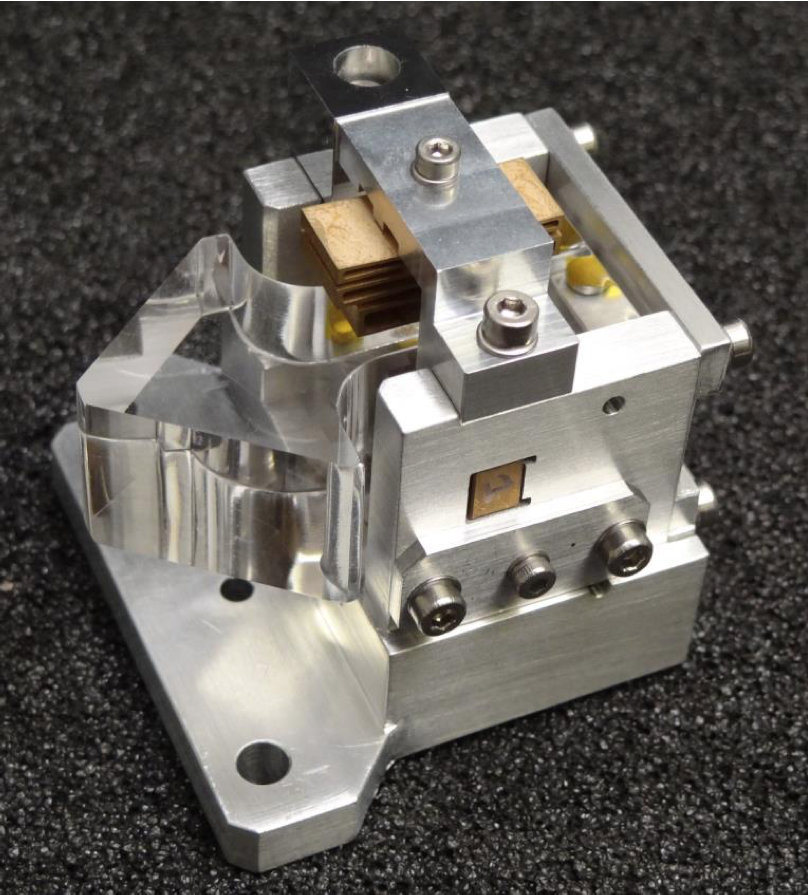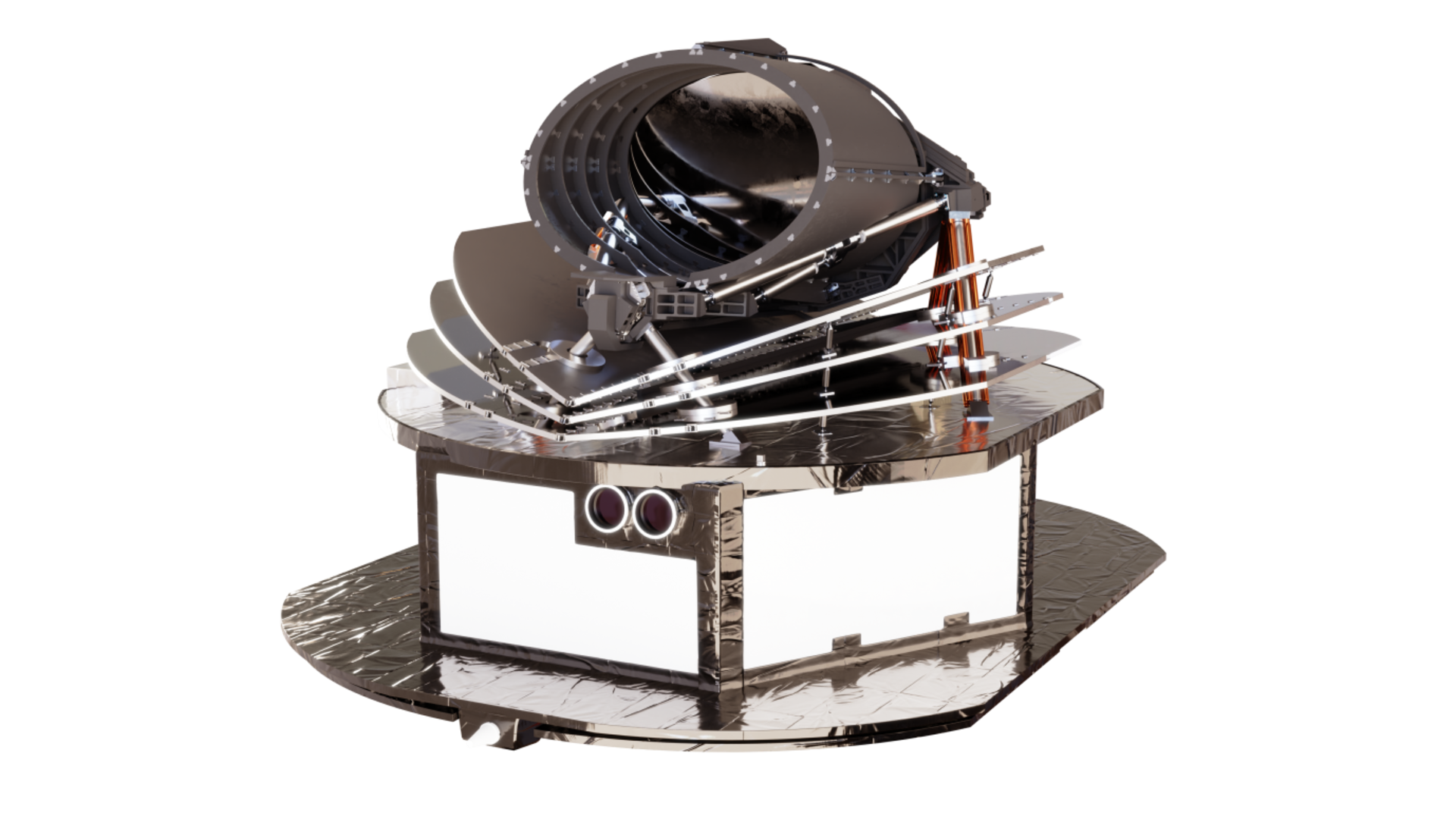Ariel's instruments
ESA’s Ariel mission is equipped with two scientific instruments to study the atmospheres of up to 1000 exoplanets: the Ariel medium-resolution InfraRed Spectrometer (AIRS) and the Fine Guidance System (FGS). Collected light is directed onto these instruments by a set of mirrors called the telescope assembly.
Ariel medium-resolution InfraRed Spectrometer (AIRS)

Ariel will use its AIRS instrument to study the atmospheres of exoplanets. This spectrometer is sensitive to infrared light with wavelengths between 1.95 and 7.8 micrometres. This range is perfect for studying exoplanetary atmospheres since the spectral fingerprints of atmospheric molecules are prominently present in infrared wavelengths. AIRS consists of two channels with the same design. Channel 0 is sensitive to wavelengths of 1.95–3.9 micrometres and channel 1 to wavelengths of 3.9–7.8 micrometres. Each channel splits the incoming light from stars into its different wavelengths using a prism and has a camera to capture them. The two channels can be combined to observe the same objects across the entire range of the instrument.
Fine Guidance System (FGS)
The FGS is a versatile instrument that will help Ariel with guiding, centring, and focusing on objects. It consists of a visible camera and two fine guidance sensors that precisely measure the relative positions of stars to supply input about the direction in which the spacecraft is pointing. The FGS of Ariel also includes a near-infrared spectrometer spanning 1.1 to 1.95 micrometres. This spectrometer is used for science, extending the spectroscopic range from the AIRS instrument.
Telescope assembly
Ariel’s telescope assembly catches light with a big elliptical mirror that is 1.1 m wide and 0.7 m high, comparable to the surface area of a round mirror with a diameter of 0.9 m. The big mirror reflects the light onto a second smaller mirror sitting in front of the big one. This second mirror reflects the light towards a third mirror inside the spacecraft, which focuses the beam towards the science instruments. The focus beam is then split into three parts. Two parts go to the AIRS instrument and the third to the FGS instrument.


